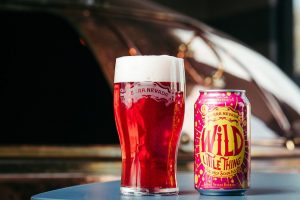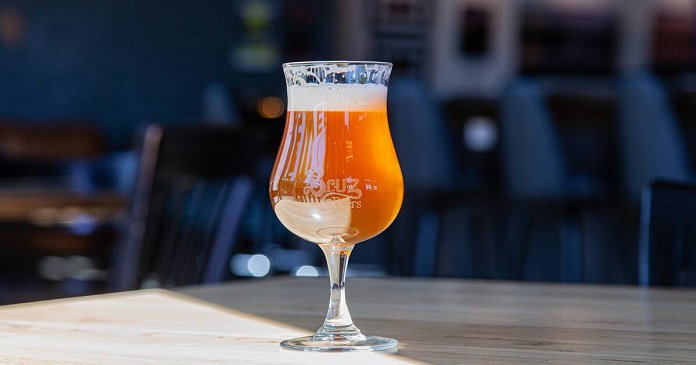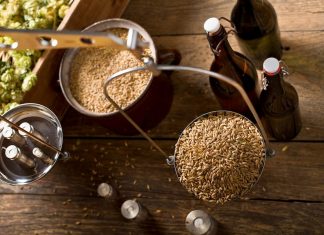
While IPAs are currently trending, sour drinks have always been more popular. These beers go well with food, are excellent gateway beers for wine consumers, and help break up a fridge full of hop bombs. While sour beers have only recently gained popularity in the US, they lay the groundwork for the development of beer. Sour beer is nothing new, and long before Louis Pasteur recognised the role of yeast in fermentation, civilisations were brewing beer. Some breweries that date back before that discovery are still operating today. Here’s everything you need to know.
What is Sour Beer?

If you’re a beer lover, you might be used to the popular styles everyone loves to drink. However, everyone needs to switch things up and invigorate their taste buds. Like a glass of lemonade in the summer, a delightfully complex with a tart kick sour beer delivers a unique experience to your palate. It may provide the satisfying pucker you’re searching for.
There are several different substyles of sour beer, all paying close attention to the degree of acidity the drinker will experience. If it’s not too strong, that tartness can be incredibly refreshing. And then, other sour beers make your cheeks fall and eyes squint, stopping you in your tracks. You’ll undoubtedly find your favourites among the many varieties produced by craft brewers.
These beers have a distinctly tart, acidic, or sour flavour. They develop this tart flavour because of a unique brewing technique that uses wild yeast and bacteria. In contrast, regulated yeast strains are used in other varieties of beer to create more recognisable flavours.
The most frequent bacteria used to purposefully sour beer are Pediococcus, Brettanomyces, and Lactobacillus. Another way to get a sour flavour is to add fruit while aging. That will cause secondary fermentation or introduce bacteria from the fruit’s skin. Even today, the brewing of sour beers is incredibly unpredictable due to the risk of employing wild yeast. The beer can take years to mature and requires months to ferment.
The History of Sour Beer
People have been brewing beer since around 4,000 B.C. At that time, all brews were fundamentally sour. The starter from one batch to another typically contained some wild yeast and bacteria since pure yeast cultures weren’t readily accessible. Sour beers were created by purposefully introducing wild yeast strains or bacteria into the brew, in contrast to current brewing, which is carried out in a sterile environment to prevent the incursion of wild yeast. Sour beers practically vanished as lagers and ales gained popularity in the middle of the nineteenth century as pasteurisation and refrigeration technology advanced and spread. And then, they regained popularity among beer drinkers worldwide in the 1970s.
Early in the eighteenth century, Belgium produced the first sour beers, and there are still breweries in Flanders (northern Belgium) that have been in business for centuries. Belgian brewers permitted wild yeast to organically contaminate the beer through the barrels or while the wort was chilling in a Koelschip exposed to the elements, a risky technique many current brewers avoid. After the Civil War, many Belgian and German immigrants brought sour beer to other countries.
Types of Sour Beer

Today’s market offers a massive selection of sour beers, many of which have roots in Germany and Belgium. However, there is also an increasing amount of Australian-made sours produced each year by craft breweries. Below is a description of the main categories of sour beers:
- Berliner Weisse. These tart sours, which have their roots in Berlin, are generally sweetened with fruit syrups.
- East Flanders/Oud bruin. East Flanders Brown ale and Oud bruin are from Belgium’s Flemish region and don’t age in the wood. Brewers utilise cultured yeasts to add sour flavours as a consequence.
- Gose. Goses are brewed in the Goslar region of Germany and frequently include coriander and salt. Brewers make these beers sour by adding lactic acid to the wort before primary fermentation.
- Gueuze. This sour lambic combines fresh and aged lambic batches, bottling the mixture for further fermentation. Cherries and other sweet fruits are sometimes added to gueuzes after secondary fermentation to reduce acidity.
- Lambic. Originally from the Pajottenland region of Belgium, which includes Brussels, lambics typically spontaneously ferment outdoors. Most often, lambics are secondary fermented with fruit or combined with other batches.
- West Flanders sour red ale. A descendant of English porters, this beer has its roots in the Flemish region of Belgium. Brewers often use traditional brewer’s yeast to ferment West Flanders sours, which are then stored in oak barrels with bacteria to develop and age.
Tips for Storing Sour Beer
It’s best to keep sour beer between 7 and 12 degrees Celsius. If you cap your sours, keep them upright when storing. However, store them on their sides if they are corked. As a result, the corks stay moist, and the bottle doesn’t fill with air.
How to Serve Sour Beer
You can serve sour beers at various temperatures, depending on their kind. While sour ales, lambics, and gueuzes taste best between 10-12℃, Berliner Weisse is best when served between 4 and 7℃.
Glassware Recommendations
Although you can use many various glasses to serve sour beer, the tulip is your best option. This glass enables you to extract a rich aroma from the beer’s head while allowing the beverage to breathe, which is crucial for savouring a sour. However, you can also serve sours from snifters, tumblers, and oversized wine glasses.
Foods to Go with Sour Beer
While sour beer pairs well with a wide range of foods, the following dishes benefit most from its distinctively acidic flavour and aroma:
- Spicy meals such as fajitas or chilli
- Fatty beef slices
- Sausage and other cured meats that are salty
- Foods that have been deep-fried, such as fries or onion rings
- Strong cheeses like blue, goat, and sharp cheddar
- Served with lemon juice and drawn butter, mussels, clams, and oysters
- Other egg dishes and omelettes















